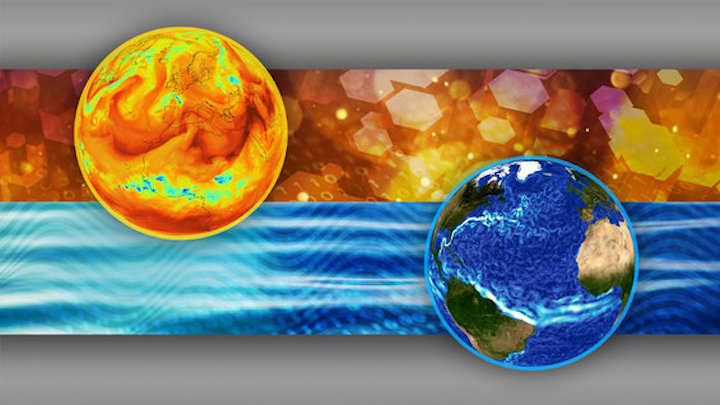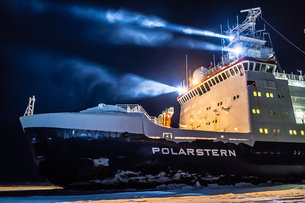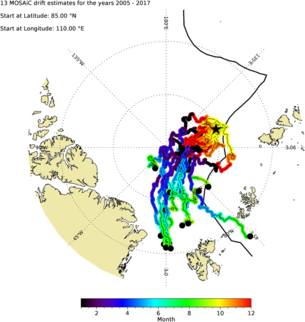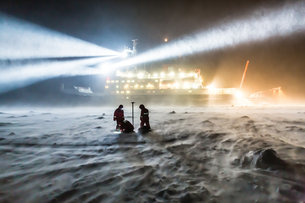27.09.2019

A new European mission, the Far-infrared Outgoing Radiation Understanding and Monitoring mission, or FORUM, will add a crucial measurement to help our understanding of Earth’s changing climate.
Measurements from the new spacecraft will improve confidence in the accuracy of climate change assessments that form the basis for future policy decisions.
FORUM will record far-infrared radiation emitted from Earth to space – extending beyond the parts of the infrared spectrum currently being measured. The measurements will help the study of Earth’s radiation budget – the balance between the incoming radiation mostly from the Sun at short wavelengths, and outgoing radiation, which is a combination of reflected radiation from the Sun and radiation emitted by the Earth system, much of it a longer wavelengths. When the budget is not balanced, the temperature of the planet can change, with consequences for the climate. Human activities have altered the atmosphere, changing the behaviour of the heat-conserving elements.
More than half of the outgoing longwave energy is in the far-infrared part of the electromagnetic spectrum, which will be measured for the first time by FORUM. This will give a clearer, more detailed picture of what is happening in different altitudes of the atmosphere, and allow more accurate tracking of atmospheric components, especially water vapour and ice clouds..
Josef Aschbacher, ESA’s Director of Earth Observation Programmes, said, “FORUM will measure, for the first time, the far-infrared part of the electromagnetic spectrum from space, thus allowing us to better understand the energy balance of our planet. FORUM will bring great benefits to climate science.
“Better understanding the complexity of our climate system and filling gaps in our knowledge is of critical importance as the consequences of climate change are far-reaching, affecting all facets of society and the natural world.”
The design of the mission will now be fine-tuned, and then built with a view to being launched in 2026.
FORUM is ESA’s ninth Earth Explorer mission. The series of satellites uses innovative measurement techniques to yield new insight into different aspects of the Earth system and the interactions that bind the system as a whole. They are designed and built to fill knowledge gaps identified by the scientific community, keeping scientists at the heart of the selection and development process.
FORUM and its competitor, the Sea-surface Kinematics Multiscale monitoring (SKIM) concept, were presented and discussed in detail with the scientific community at a User Consultation Meeting in Cambridge, UK, in July. While both missions would deliver outstanding value to science, ESA’s Advisory Committee for Earth Observation recommended FORUM for its planned impact on climate models, identifying climate prediction as a major global concern.
+++
A YEAR TRAPPED IN ARCTIC ICE FOR CLIMATE SCIENCE
As millions of people around the world marched for urgent action on climate change ahead of this week’s UN Climate Action Summit, an icebreaker set sail from Norway to spend a year drifting in the Arctic sea ice. This extraordinary expedition is set to make a step change in climate science – and ESA is contributing with a range of experiments.
With the youth calling for action, the climate crisis is in the public eye more than ever, and consequently there is more pressure to push the issue higher up the global political agenda.
The state of the climate has been detailed in a new landmark report that was produced for the summit. It says that the five-year period from 2014 to 2019 is the warmest on record and that sea-level rise has accelerated significantly over the same period as carbon dioxide emissions have hit new highs.
However, the Arctic is warming twice as fast as the global average. Since Earth’s climate works as a system, the consequences of this rapid warming are not only being felt in this remote polar region, but also across the planet.
Needless to say, a better scientific understanding of the complexities of the fragile Arctic environment is critical for policy decisions on climate-change mitigation and adaptation, and for setting up a framework for managing Arctic development sustainably. The EU’s Integrated Policy for the Arcticincludes a central pillar of climate change for this reason.
The Multidisciplinary drifting Observatory for the Study of Arctic Climate (MOSAiC) expedition is about to make a major contribution to Arctic climate science.
Spearheaded by the Alfred Wegener Institute, Helmholtz Centre for Polar and Marine Research (AWI), it is the biggest shipborne polar expedition of all time and aims to take climate research to a completely new level.
It involves the Polarstern German research icebreaker spending a year trapped and drifting in the sea ice so that scientists from around the world can study the Arctic as the epicentre of global warming and gain fundamental insights that are key to better understand global climate change.
During each phase of this huge international expedition, roughly one hundred people will be researching, working and living on board the icebreaker as well as on the sea ice. They will face some extremely harsh conditions during the polar winter – complete darkness, storms and temperatures that can drop to –40°C.
Christian Haas, from AWI, said, “We want to better understand the processes and energy flows between the ocean, ice and atmosphere – and how they change over the course of the seasons.
We will also compare the data with satellite data, in particular with ESA’s CryoSat, which was specifically launched to measure ice thickness. This will allow us to observe how the ice grows and becomes thinner.”
ESA’s Tânia Casal said, “The MOSAiC expedition offers a unique opportunity to considerably improve our understanding of ocean–ice-snow–atmosphere processes and this will contribute to a more accurate modelling of future Arctic climate scenarios.
“We want to make sure that data associated with these processes delivered by ESA satellites and by the Copernicus Sentinels as well as from missions under development have the best possible impact. So we are contributing to the expedition with a range of calibration and validation activities.
“For example, as Dr Haas mentions that arrangements have been made for measurements to be taken that will be used to validate CryoSat, but also that validate the Copernicus Sentinel-1 radar mission.”
ESA’s Craig Donlon added, “We are currently working on new high-priority missions such as the Copernicus Imaging Microwave Radiometer (CIMR) mission and the Polar Ice and Snow Topography Altimeter (CRISTAL) mission to support the EU Integrated Policy for the Arctic. CIMR will provide high-resolution multispectral images of ocean, ice and snow properties and CRISTAL will provide estimates of sea-ice thickness. The two missions can work in perfect synergy.
“MOSAiC will give us an unprecedented time series of reference measurements to develop quality algorithms and data products from the CIMR and CRISTAL missions, which will support applications from weather forecasting to climate research, with benefit for the Copernicus services and beyond.”
Dr Casal noted, “In addition, we are working with the Japan Aerospace Exploration Agency to collect measurements from the ALOS-2 mission as part of our preparatory work on the ROSE-L mission, which is another high-priority candidate for Europe’s Copernicus programme, and which will work in synergy with the Copernicus Sentinel-1 C-band radar for sea-ice charting services.”
ESA experiments also include ship-based instrumentation for dedicated validation measurements of the thickness of thin seasonal ice from the Earth Explorer SMOS mission.
Josef Aschbacher, Director of ESA's Earth Observation Programmes, said, “The scale of MOSAiC expedition is truly remarkable and a testament to what international collaboration can achieve.
“Climate change is a very serious global concern, and the pioneering satellite missions we develop are key to measuring and understanding change so that informed decisions on action can be taken.
“This expedition gives us an important and unique opportunity to validate measurements being made from space as well as further the development of new missions on the drawing board.
“We wish everyone participating in MOSAiC the very best of luck – it will certainly be a challenging and harsh environment to work in.”
+++
A NEW SATELLITE TO UNDERSTAND HOW EARTH IS LOSING ITS COOL
Following a rigorous selection process, ESA has selected a new satellite mission to fill in a critical missing piece of the climate jigsaw. By measuring radiation emitted by Earth into space, FORUM will provide new insight into the planet’s radiation budget and how it is controlled.
The Far-infrared Outgoing Radiation Understanding and Monitoring (FORUM) mission was one of two concepts competing to be ESA’s ninth Earth Explorer mission.
Earth Explorers use innovative measurement techniques to yield new insight into different aspects of the Earth system and the interactions that bind the system as a whole. Fundamentally, they are designed and built to fill knowledge gaps identified by the scientific community, so, importantly, the community retains a key role in the selection and development process.
After a two-year feasibility study phase, both FORUM and its competitor, the Sea-surface Kinematics Multiscale monitoring (SKIM) concept, were presented and discussed in detail with the scientific community at a User Consultation Meeting in Cambridge, UK, in July.
Wolfram Mauser, who chaired ESA’s Advisory Committee for Earth Observation on behalf of Martin Visbeck, said, “Both mission concepts are outstanding in the value they would bring to science, and are technologically ready to be built, so it was difficult to recommend which one should be implemented.
“Nevertheless, FORUM promises to improve climate models and, therefore, climate prediction. So with the issue of climate change a major global concern, we finally decided to recommend this concept – and we are very happy that ESA has taken our recommendation.”
Earth’s surface temperature is driven by the radiation balance at the top of the atmosphere, but this balance has been disturbed by the emission of greenhouse gases that are trapping heat in the atmosphere that would otherwise escape into space.
More than half of this outgoing longwave energy is in the far-infrared part of the electromagnetic spectrum – and this has not, so far, been measured.
Filling this gap, FORUM will measure across Earth’s entire far-infrared part of the electromagnetic spectrum.
These measurements are important because Earth’s outgoing radiation at these wavelengths is strongly affected by water vapour and ice clouds, which in turn, play a key role in regulating surface temperatures.
Measurements from this exciting new mission will improve confidence in the accuracy of climate change assessments that form the basis for future policy decisions.
Josef Aschbacher, ESA’s Director of Earth Observation Programmes, said, “FORUM will measure, for the first time, the far-infrared part of the electromagnetic spectrum from space, thus allowing us to better understand the energy balance of our planet. FORUM will bring great benefits to climate science.
“Better understanding the complexity of our climate system and filling gaps in our knowledge is of critical importance as the consequences of climate change are far-reaching, affecting all facets of society and the natural world.”
The design of the mission will now be fine-tuned, and then built with a view to be launched in 2026.
Quelle: ESA




